When we are talking about the “Industrial Internet of Things” or simply IIoT, four subjects come out of our mind:
- Wireless Technologies
- MEMS Sensors
- Cloud Technologies
- Expert Systems and Machine Learning Analytics
Predictive maintenance is one of the best strategies for improving the reliability of physical assets. It is also one of the areas in which IIoT can play a great role. A new generation of PdM has been started based on the powerful tools of the IIoT mentioned above.
One of the significant steps towards the new generation of predictive maintenance (PdM) is to provide the assets with hundreds of digital sensors, especially those capable of sending data to the cloud server wirelessly. Then, the cloud’s collected data can be analyzed automatically using predictive models built using advanced expert systems and machine learning platforms. The outcome of this analysis is meaningful and useful information about the assets’ health. Knowing the faults and problems ahead of time will let the asset managers solve any possible threat to the assets’ reliability in-time.
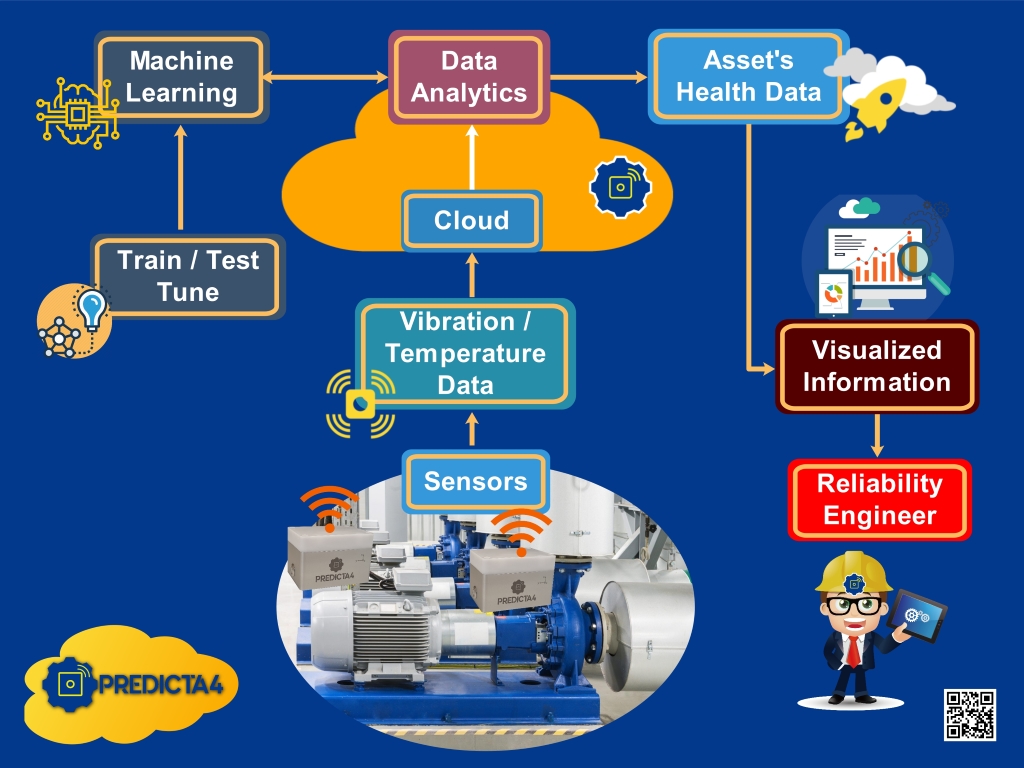
Bringing PdM Technologies Up to the Clouds
For implementing PdM, different condition monitoring technologies such as vibration analysis, oil analysis, electrical signature analysis, thermography inspection, and ultrasound evaluation are used to detect equipment faults before they lead to failure. One of the main steps in doing so is data collection, which is usually a massive burden for the reliability department staff. It is traditionally done by walking around the assets on a routine basis. The data is gathered with different instruments and usually in monthly or bi-weekly intervals. This approach has some issues. One problem is that it is difficult to integrate all of the monitoring technologies as usually, each of them has a different software platform. Another issue is that one cannot detect the faults that progress quickly. It is also difficult to effectively compare the operating condition data, which are usually available online, with condition monitoring data. Furthermore, there is usually no machine learning platform available to be used with on-site collected condition data.
On the other side, wireless sensors can be used to overcome these limitations of the traditional PdM approach. With wireless sensors, faults can be recognized earlier while eliminating human error, improving worker safety, and the technicians can use their time for tasks with more added value, such as data analysis or planning rather than data collection. Combining wireless sensors with WiFi, cloud technology, and machine learning models provides the opportunity to store any considerable amount of data easily while analyzing and discovering knowledge from it simultaneously.
Wireless Technology and MEMS Sensors
P-Cube is a good example of MEMS sensors equipped with wireless technology. It can measure vibration and temperature at the same time. It is possible to start a PdM program by installing a few P-Cube devices on some of the rotating machines in your plant. They will send the vibration and temperature data wirelessly to the cloud server. The Watchdog agent will continuously monitor the critical parameters related to the machine’s health and report any detected problem through email and SMS to the users. The users also can have access to the vibration data, including time waveform, FFT plots, and overall parameters from anywhere by logging in to their account.
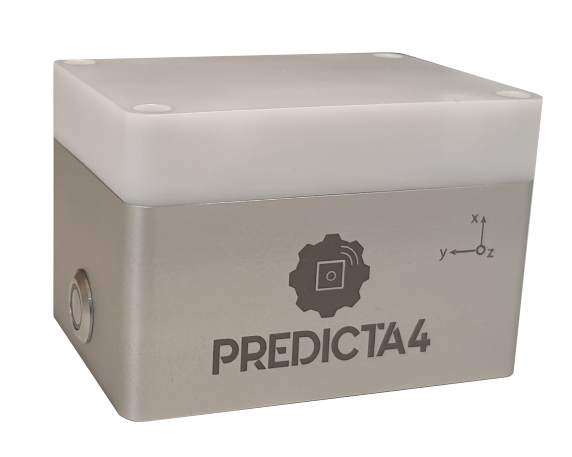
Cloud Technology
Cloud technology provides important advantages for PdM program:
- Cloud is the best storage option for large amounts of data
- It offers huge computing power for conducting sophisticated analytics
- It is possible to have access to the data from any system anywhere in the world
Let’s Get Started!
The best approach is to start with a pilot program and build on it upon success. Choose 8-10 of your rotating machines based on the criticality of them. Also, keep in mind those difficult machines to access or have some unsolved problems when you are choosing.
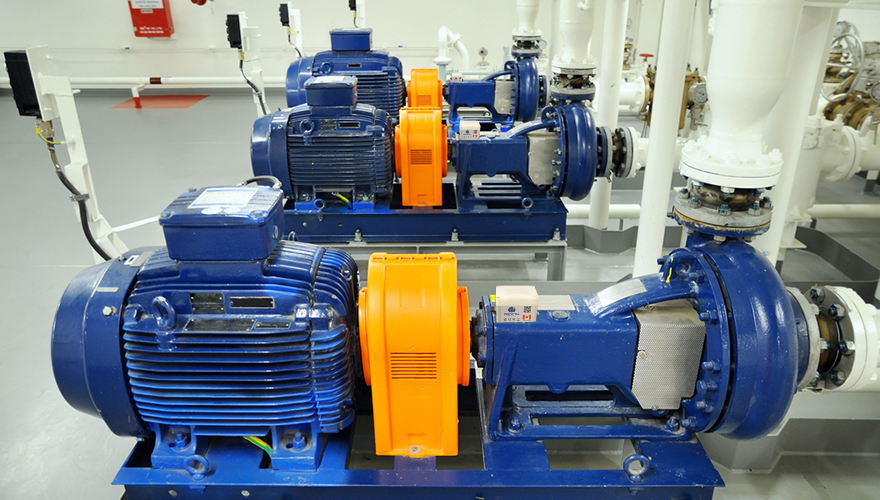
Another important activity is to realize how wireless will fit within the maintenance and company culture. Wireless items are a benefit and complement existing practices by engaging all in the right way. It is well-known that technology, people, and processes are three elements that need to be in alignment with each other for implementing a successful program. Technology, by itself, is not enough. Find the right people within your company to champion it — they don’t have to be the highest-ranking, but they are the ones that could lead a new project towards success.
Sell the wireless PdM technology to the plant management with a cost-benefit analysis. If you can prevent one failure, what would that be worth in terms of lost revenue or costs? Show the benefit of the right information at the right time on the right assets provided with the right technology.
Wireless condition monitoring is a simple and cost-effective substitute for traditional condition monitoring practices. The ROI is high as this technology is not expensive while detecting machinery health issues can lead to a considerable reduction in operational costs by planning and implementing in-time maintenance actions. Whether you have an existing PdM program or just starting, before jumping into wireless, think about how it fits with your processes, company, people, and existing technology and how you can make it work for you


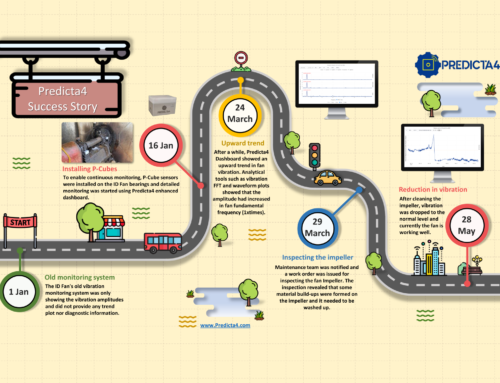
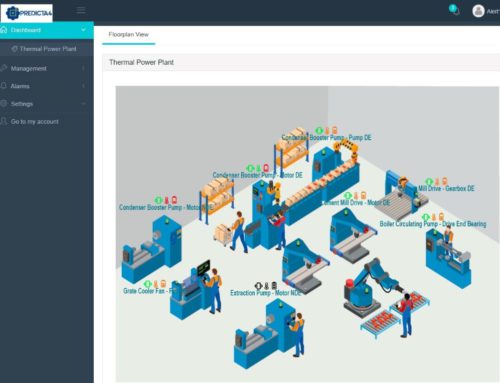

Leave A Comment
You must be logged in to post a comment.